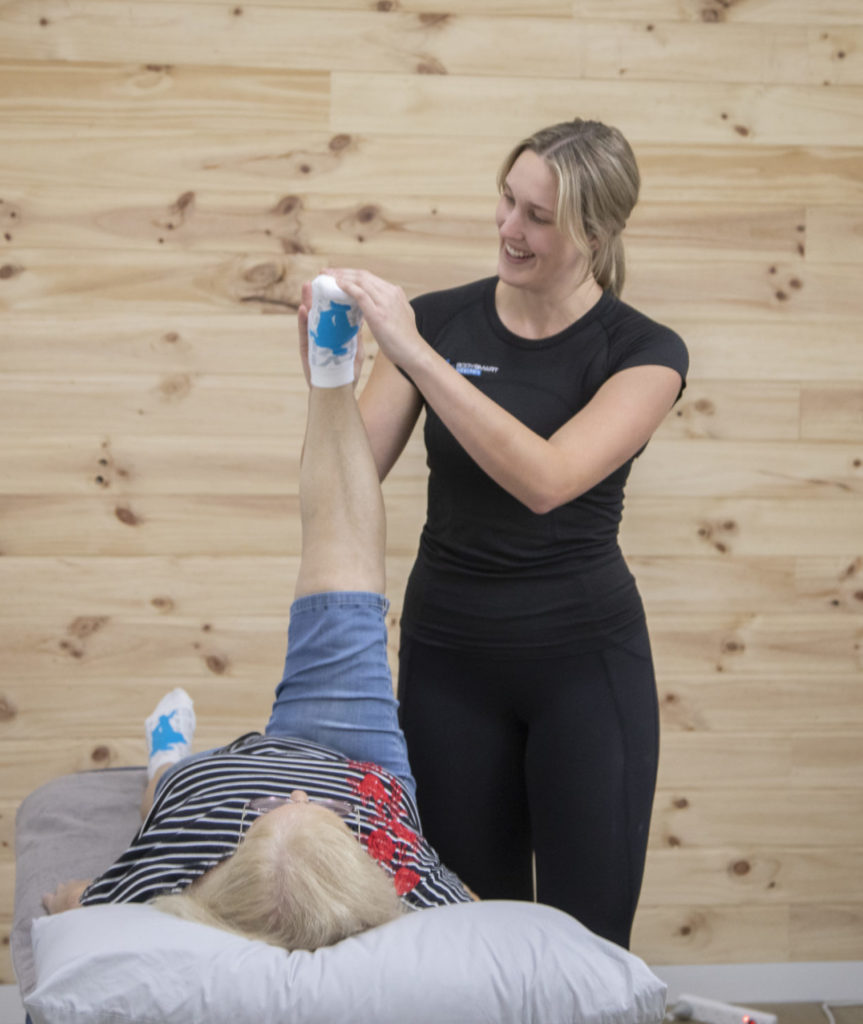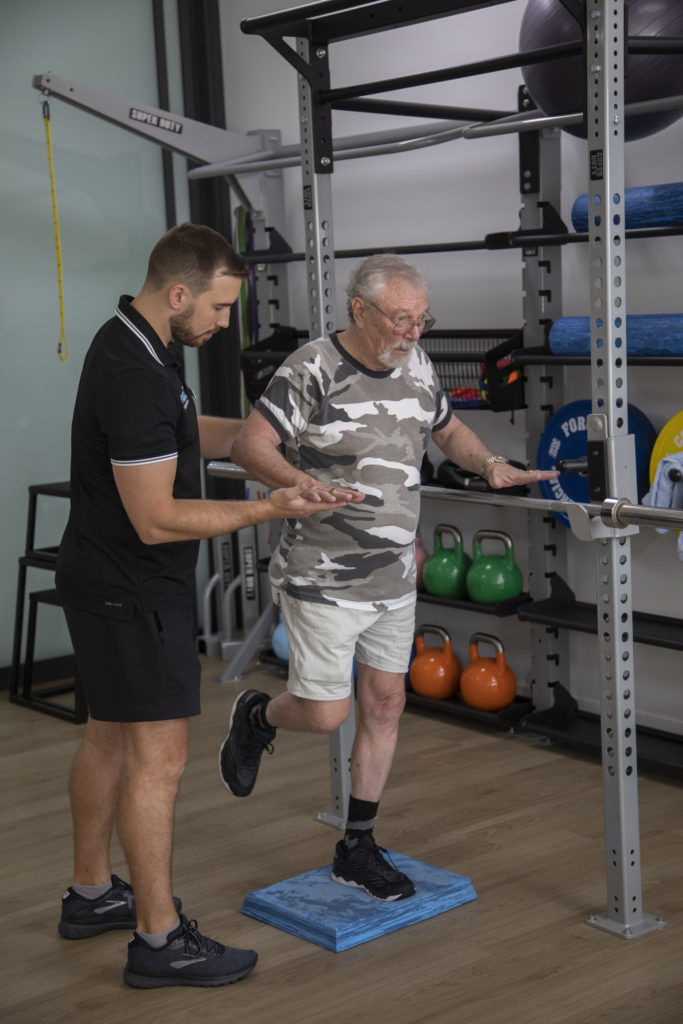
How can i fix my plantar fascia pain?
Plantar Fasciitis is an overuse condition that causes pain under the foot and is a common complaint new clients ask our Body Smart Health practitioners about. So what exactly is the plantar fascia? Why does it become sore? And what can be done to fix the pain and ensure the pain doesn’t come back?
What is the Plantar Fascia:
The plantar fascia is a thick aponeurosis or ligament on the underside of the foot that starts at the calcaneus (heel) bone and inserts at the toes. The plantar fascia is responsible for:
- Supporting the longitudinal arch (inside arch) of the foot
- Shock absorption during walking, running and jumping
- Helps to stabilise the foot and reduce tension through other ligaments and neural structures during the ‘late stance phase’ of walking (or just before your toes leave the ground).
What is plantar fasciitis?
Plantar fasciitis is an ‘overuse’ condition that causes collagen fibres in the ligament to repair in a disorganised and tangled way and can result in a thickening of the plantar fascia tissue. The word ‘overuse’ could mean that an athlete hasn’t allowed the tissue enough time to repair itself before commencing another training session, or it could mean that the way you are moving is causing unnecessary stress and strain on the plantar fascia ligament and over time it has become irritated and thickened. Research shows that very rarely is plantar fasciitis the result of inflammation!
Plantar fasciitis is more common in runners, dancers, older adults and people with a higher body weight, and can be caused by:

- Biomechanical abnormalities such as excessive pronation or supination through the foot and ankle (flat foot or really high arches)
- Tightness through the calves, hamstrings and/or gluteals
- Weakness/muscle imbalances through the hips and pelvis
- Limited ankle flexibility
- High body weight or BMI
- History of injury/pain to the other foot or leg
In the early stages of plantar fasciitis the pain may be worse in the morning, ease with activity and then ache slightly after activity. As the condition becomes more severe the pain may be there during weight-bearing and may become worse with activity.
What can I do immediately to make the pain go away?
There are a number of ‘quick fix’ techniques that can be used to reduce pain immediately. It is important to remember that not all of these options will work for everyone and they are more likely to work if you are experiencing the early stages of planter fasciitis. If you have had pain lasting for a couple of months or more, then it is likely your pain is stemming from dysfunctional movement patterns and you will need a personalised strength and conditioning rehabilitation program to truly alleviate your pain.
Some ‘quick fix’ options include:
- Stop doing any movement that causes irritation to your plantar fascia
- Ice your plantar fascia after activity
- Stretch your plantar fascia, calves, hamstrings and glutes regularly
- Self-massage (ideally with a frozen water bottle or golf ball)
- Non-steroidal Anti-inflammatory tablets or creams are beneficial for some people
- ‘Low-Dye’ strapping tape technique
- Silicone gel heel pad to help with shock absorption
What can be done long term to ensure the pain doesn’t come back?
Long term management to alleviate and prevent future pain depends on the cause of your plantar fascia pain. Consulting an exercise physiologist or physiotherapist for an individualised assessment of your movement patterns before diving into any of these is strongly recommended. However, longer term management often includes:
- Strengthening exercises for the intrinsic foot muscles, tibias posterior, and hip abductors/external rotators
- Modification of exercise technique
- Soft tissue therapy best provided by the physiotherapist
- Night splints or socks known as ‘Strasbourg socks’ are considered for people with pain lasting for more than 6-months
- You may benefit from modification of your footwear (Body Smart Health trusts and works with a small number of podiatrists in Brisbane and Ipswich who will be able to help you if we believe a podiatry assessment may be of benefit).
What exercise can I start doing now that won’t aggravate my plantar fascia and make the pain worse?
If you are in pain right now but still want to get started with some exercise, aerobic exercise that stresses mostly the upper body would be recommended. This could be achieved with activities like boxing or using the arm ergometer at the Body Smart Health clinics. With regards to strength training, there is absolutely no harm in getting started with some upper body machine or hand weights. Reformer Pilates-based exercise is also a fantastic starting option and will ensure you are strengthening both upper and lower limbs without placing unnecessary stress through your lower limbs and plantar fascia. If the gym isn’t for you then consider jumping in the pool. In chest deep water there is approximately 80% less force through your feet and ankles meaning you can utilise pool noodles and other devices to strengthen your body in a weight-less environment. If this is something you are interested in Body Smart Health does offer supervised hydrotherapy sessions at locations throughout Ipswich and Brisbane.
What would Body Smart Health do for me if I were to schedule an assessment?
If you were to schedule an assessment with Body Smart Health your physiotherapist or exercise physiologist will ask you questions relating to your medical history and physical health history. Following discussion, your practitioner will complete an array of physical assessment items to determine what is the cause of your pain. This may include:

- Palpation of your plantar fascia to feel for any tearing or thickening
- Special tests like the ‘Windlass’ or ‘Jack’s’ test to determine if the pain is in fact stemming from your plantar fascia and not other nearby structures
- Assessment of your gait (walking patterns)
- Motor control through a single leg squat or sit-to-stand
- Assessment of the strength through your lower limbs
- Assessment of your balance including what muscles you use to help your balance in difficult positions.
For more personalised information about how to fix and manage your plantar fascia pain please schedule a consultation with our exercise physiologists or physiotherapists at any location.
Ph: 1300 630 214